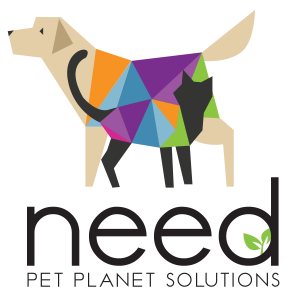By Dr. Al Townshend
The Good and the Bad Basic Ingredients
There is no doubt that protein and fat are the most important ingredients in a diet designed for a carnivore. There are other ingredients that are essential not only to provide a complete and balanced recipe but to go beyond just meeting the basic requirements.
Carbohydrates
Carbohydrates are not required to be in a diet of dogs and cats. They have the ability to convert protein and fat into glucose. However, dogs and cats can benefit from carbohydrates providing a good source of glucose (sugar) or energy for the cells of the body. Dogs have a better ability to benefit from carbohydrates than cats and so dog recipes can have higher levels than recipes for cats.
Good Sources of Carbohydrates
Whole grains like rice, oatmeal, and barley are good carbohydrate sources. Legumes (peas, chickpeas, and lentils) are also good providers. They all have additional benefits such as protein, fat, fiber, vitamins and minerals.
Poor Sources of Carbohydrates
Not so good carbohydrates (like corn, wheat, and soy) are known to cause allergies and may not provide the advantages good carbohydrates provide.
An ideal recipe would contain lower levels of carbohydrates and higher levels of animal protein.
Fiber
Fiber, the little-known ingredient that gets a bad rap. Many consider fiber as a filler that has no value in pet food.
Fiber is not digestible by the dog, cat or human, it does not provide any nutrition to the diet. So why does every pet food contain fiber? Why is fiber necessary?
Quality pet foods like the ones in the Pet Planet stores contain proteins, fats, and carbohydrates that are between 90 and 100% digestible. If that is all that is in pet foods, once those nutrients were broken down and utilized by the body, there would be almost nothing left in the digestive tract. That means almost no amount of stool (“poop”).
The food pets eat needs to move through the digestive tract at a steady rate in order for the best digestion and to assure a regular and firm bowel movement every day. Too little poop and things move slowly causing reduced digestion and irritation which can lead to diarrhea. Too much poop and the food passes too quickly which lowers digestion, causes discomfort and more frequent trips to the bathroom.
Fiber, in the proper amount, improves digestion, soothes the digestive tract and assures a firm, consistent bowel movement.
Good Sources of Fiber
Many fruits and vegetables are good sources of fiber. Legumes like peas, lentils, and chickpeas can provide fiber. Many foods also add specific fibers like beet pulp (from the white sugar beet after the sugar is removed), tomato pomace (the skin and pulp of the tomato) or chicory root (a natural source of inulin. They have the added benefit of being an ideal source of nutrition for the good bacteria (probiotics) so essential for a healthy digestive tract and immune system.
Bad Sources of Fiber
Not so good fiber sources include peanut hulls, cellulose (wood fiber), soy hulls which can irritate the digestive tract.
So never let anyone tell you adequate amounts of good fiber is a filler. The staff at all Pet Planet stores are very well educated on the importance of fiber as well as the benefits of limited amounts of carbohydrates
Want help selecting a pet food for your pet? Get a free Pet Planet Nutrition Consultation at a Pet Planet Health location near you.
____
Additional Resources


